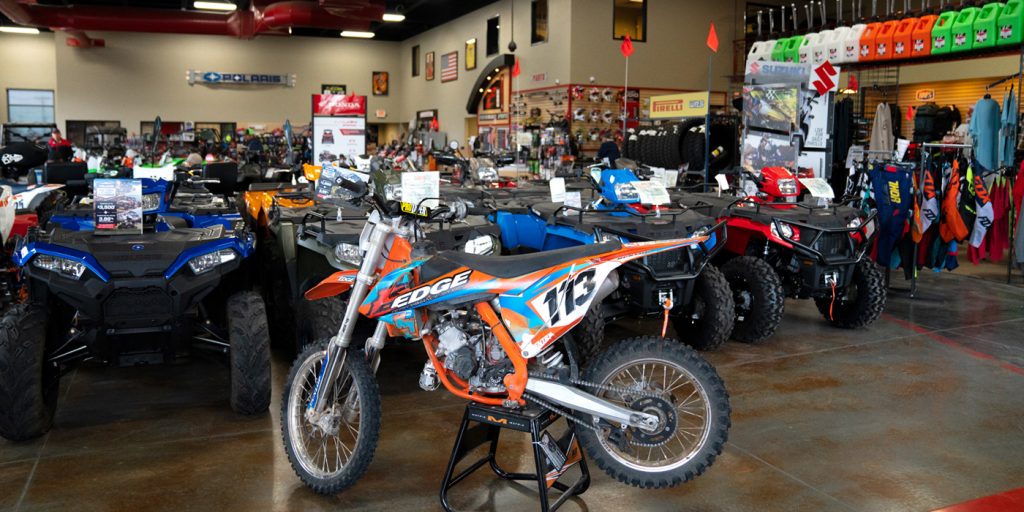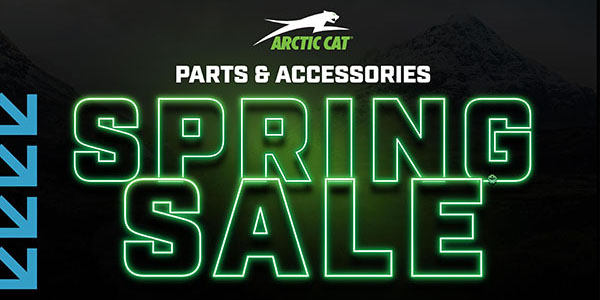In today’s technology-filled world, we are surrounded by data, which influences to how we make decisions in our day-to-day lives. When it comes to running our dealerships, our databases could hold the key to improved marketing strategies that could better the customer experience.
From his first-hand experience as a powersports dealer, Ryan Gentry, president at Edge Performance Sports in Ontario, OR, and co-founder of PSXDigital, an AI-powered customer experience management platform for powersports dealerships called CXMAi, focused on CRM, inventory, marketing automation and websites, and Larry Bruce, CEO of PSXDigital, walk through ways in which dealerships can use data to get through the COVID-19 pandemic.
No time to read this article? Listen to it instead!
MPN: In your opinion, what is the most important asset of a powersports dealership?
RG: I believe that the most important assets to the business are your employee base and your database. When you dive into it, your employees are so important because they are the ones interacting with the customers, and ultimately, they’re the ones adding to your database. The entire relationship starts with well-trained employees who follow processes that the owner has put in place in order to gather data. In my dealership, that has evolved for us. For years, that was not an area that I understood all that well and I didn’t know what data was or how important it was to have accurate data. But as the landscape changes, it became one of the most valuable things.
MPN: How are your employees gathering data and creating relationships with customers?
RG: One of the most important pieces and something that we miss is that face-to-face contact with the customer. I think in the past, it has been difficult to get accurate data from the initial employee interaction. You’ve got to have systems in place and technology in place to make it easy for the employee and to reduce the amount of friction that can be created by gathering data, so we can get good data.
MPN: So, if an employee has a conversation on the phone, they may have to enter that information into a database from their notes, and that information helps in the datamining process?
RG: Yes. Our experience with that has been that you’ve got to make it as transparent and controllable as possible. With our system, if a customer calls in and they’re already in our database, it shows us that. We know who the customer is, who spoke to the customer, we can record the conversation and transcribe the notes. We put systems into place where we know we are getting accurate data and taking as much of that off of the employee as possible by making it easy for the employee to just fill in the blanks.
MPN: I think that that is a key point you make there. Using technology to fill in the blanks. It is a lot more accurate than a yellow notepad by the telephone.
RG: Even for the most disciplined dealers, unless you have the processes and the technology in place to help alleviate that or to hold people accountable, you’re just not going to get accurate data at those points of contact. For us, all those touch points are on mobile applications. That makes it easy for the salesperson if they’re out on the lot. The technology that we’re using, it’s all done right there with the customer. It’s point, click and it tracks every piece of inventory they look at. Now the salesperson has all they need to focus on dealing with that customer, face-to-face, doing the best they can to help them and make a happy customer.
MPN: During COVID-19, since we no longer have that face-to-face contact, have you done anything differently to reach customers?
RG: For us, we’ve had the best month we’ve ever had in the history of our company. We are very busy anyway, based on where we are located, but also because of the work that we’ve done over the last several years and within database structure; how we’re communicating with our customers, how we gather data. We changed some of our messages to be specific to COVID-19 to keep our current database and our prospective database updated and informed about how we’re able to serve them and how we’re operating during this time. But we are always marketing to our database based on their behavior with all of our touchpoints, from social media, to our website, inbound phone calls, visits to parts and service. Overall, we haven’t changed much, and I think trying to adjust the marketing strategy in the midst of something like this is very difficult. So, if you’ve done your work and you have good data and good delivery methods, that’s what will carry you through events like this.
MPN: How has the marketing plan changed as a result of the pandemic?
LB: The marketing plan has been pretty consistent. If you look at the overall activity for the salespeople and the follow up versus the sales, they follow each other pretty closely. That activity stays consistent and as we got into February, we have this hockey stick of sales from February through March. So, the marketing has kept the existing customers at top of mind for the dealership, but then it also helped bring in a lot of the new business that this pandemic was going to create. And keep in mind, there were a lot of people who were going to go on vacation to Disney or Maui, but now they’re stuck at home. You’ve got this money that you had saved for your vacation and now you can’t use it for a vacation. So, it’s used for toys. Now, you can go to the lake, go to the woods, all while staying safe. That’s what we’re seeing happen. As a result, we are doing a lot of digital ads, targeting competitor’s lots, direct email marketing to the existing customer database and getting new customers added into the database with a very high closing ratio of 54% right now. Matter of fact, Edge Performance Sports’ traffic is up 50% from last year and 33% from last month.
MPN: What is the base amount of information you need to get from a customer to add them into your database?
LB: In the past, we were obligated to have an awkward conversation between the salesperson and the prospective customer. After the greeting, they would ask for the customer’s driver’s license to add them into the CRM. Then, they would leave the customer to put that information into the CRM. To fix that, we created an app that allows salespeople to add people into the CRM with one click. That cleared everything up. We are collecting clean data digitally, without expecting a salesperson to enter a great deal of information into a CRM. One of the positive things we did when we built PSXDigital for Edge Performance Sports is where we only need the customer’s name, email and mobile number. That’s it. The salesperson doesn’t want to spend a lot of time on admin. So, every phone call is digitally tracked, outbound and inbound. If I make a phone call to a customer, the CRM already knows I made the phone call. I don’t have to go add it later.
MPN: With AI and predictive analytics, are you able to better target customers who are interested in making a purchase based on the data you already have collected?
RG: The key to that is the system. The system has to be smart enough to know if the customer is engaged to continue or to go a different direction. I think a lot of systems aren’t smart enough, particularly in powersports, to understand that this person is not in the market. So, the systems that we use to take all those predictive analytics, send out a message, then the message adjusts and changes or stops or continues based on the customer’s interaction. This is based on the customer’s behavior; do they go to the website after they get the email? Did they open the email? What is their response? There’s a lot of really smart features that have to be part of the system, otherwise it just becomes an email blast. And that email blast ends up talking at the customer instead of talking to the customer.
Right now, Edge Performance Sports has 1,700 customers that are in the market in the last 60 days. So, I’ve got six salespeople, no BDC, and I’ve got 1,700 customers that have raised their hand and given us a name, email and/or phone number, and they are currently in the market. To be able to talk with those people and communicate with them in an intelligent manner, you’ve got to have technology that helps you do it, because your salespeople just cannot physically get that done.
MPN: Based on the stay-at-home orders set up in many states, do you have any advice for dealers on how they can use database marketing to prepare to reopen their showrooms?
LB: Start by getting your data out of your DMS and into your CRM and into something that’s more manageable from a marketing and communications standpoint. We’ve managed to perfect the combination of SMS and email messaging to be effective over the last four years. There’s a limitation to it, so you don’t want to overuse it. SMS works well because it is very direct, but how you use that in combination with email is what’s important.
RG: Take a look at, architecturally, how do you gather a customer’s information? How do you have accountability to get the data? How do you pull it into a usable space that’s combined, cleaned and in a usable format so that you can go market? That’s a great thing to be working on in this downtime. If you don’t have that, it’s really more about communicating with customers about what our game plans are. Is the dealership ready to reopen? And hopefully, if you have those things in place, you’ve been communicating with those customers and potential customers all along. Keep them engaged.
For more information on PSXDigital, visit PSXDigital.com.














